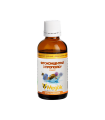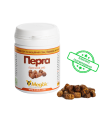Ways of using propolis:
- alcohol solution;
- water solution;
- oil solution;
- natural propolis inside (chew in small quantities);
- externally in the form of plates and canvases;
- on the teeth in the form of applications.
Recipes for the preparation of alcohol tincture of propolis and propolis ointment are attached.
What is propolis?
Beekeepers call propolis "bee glue". This is a resinous substance that bees use to seal cracks in the hive, disinfect the nest, and strengthen the honeycomb cells. It is made by bees from resinous secretions of some plants (poplars, birches, pines, aspens, etc.), processing them and adding their enzymes. The taste of propolis is bitter, has a pleasant resinous smell, and its color depends on the plants from which the bees collected the resin. It can be brown, almost black, or it can be yellow, green, and even reddish.
Application of propolis
Propolis can be used in its pure form, but its taste is quite unpleasant. In addition, it has an anesthetic effect and "freezes" the tongue and mucous membrane of the mouth. Swallowing propolis is not recommended. Pure propolis is chewed mainly for sore throats, coughs, toothaches, and infections in the oral cavity. Do not take more than 1-2 g of propolis per day. A single dose should not be larger than a match head, otherwise a mucous membrane burn is possible. You can chew propolis for no more than 20 minutes.
In its pure form, propolis has long been used in folk medicine to heal wounds, treat calluses, corns, and nail fungus.
Most often, propolis is used to make ointments, balms, water and alcohol tinctures, as well as honey with propolis. Preparations with propolis are used to improve immunity, treat viral diseases, diseases of the gastrointestinal tract, wounds, burns, frostbite, fungal diseases, psoriasis, insect bites. An aqueous solution of propolis is used to treat strokes and heart attacks, sinusitis, runny nose, and colds.
Composition of propolis
Despite the fact that the healing properties of propolis have been known for a long time, its composition has not yet been fully studied. Propolis contains four groups of compounds: essential oils, balms, resins and wax.
Propolis resins contain mainly organic acids, which determines its antioxidant properties. Essential oils (8-10%) determine the aroma and taste of propolis. Propolis also contains minerals, vitamins and flavonoids. About 20-30% of the composition of propolis is wax. It determines its consistency. The amount of wax depends on which part of the hive the propolis was collected from. It is the least in propolis collected from canvases and propolis collectors.
Sometimes, when making preparations with propolis, it is necessary to heat it. Like other beekeeping products, propolis partially loses its properties when heated to high temperatures. In particular, its smell and taste change because essential oils evaporate. The antimicrobial properties of propolis also decrease. Therefore, it is not desirable to heat propolis to a temperature higher than 80°C.
Contraindication
Pregnant women and children under the age of 3 cannot take propolis and preparations based on it.
Propolis is a means of symptomatic use. It cannot be used continuously for more than a month. With long-term use, it suppresses the body's immune system.
Contraindications to taking propolis and preparations based on it are allergies to beekeeping products, eczema, urticaria, bronchial asthma.
Propolis should be used with caution in diabetes.
Propolis is a rather expensive beekeeping product. Therefore, fakes or low-quality propolis with a large number of impurities are often found in the markets. Therefore, buy propolis only from proven manufacturers who can guarantee its quality.



